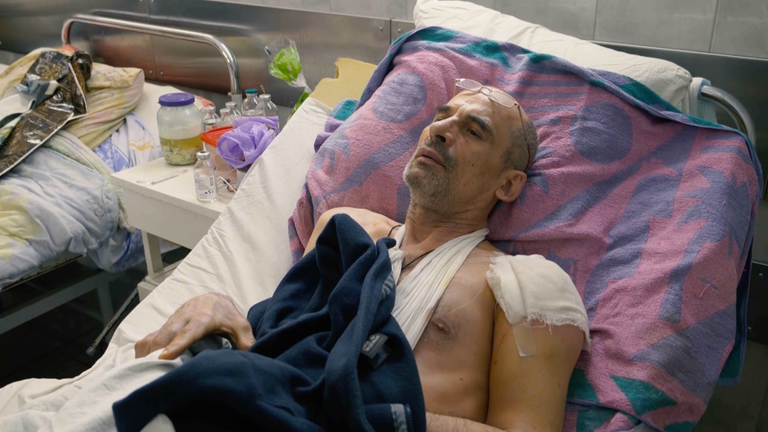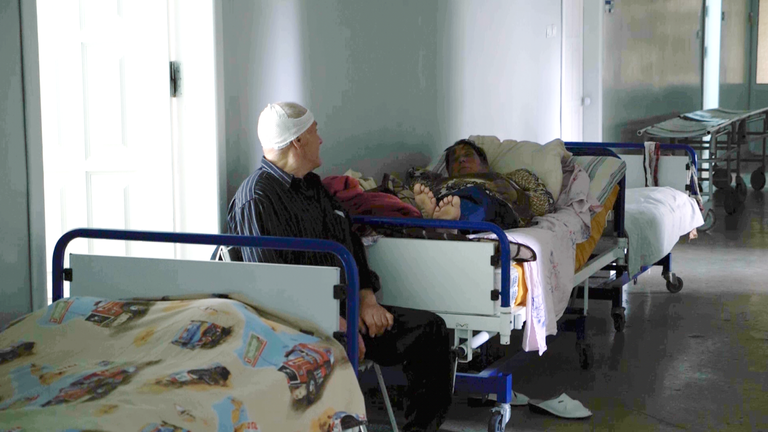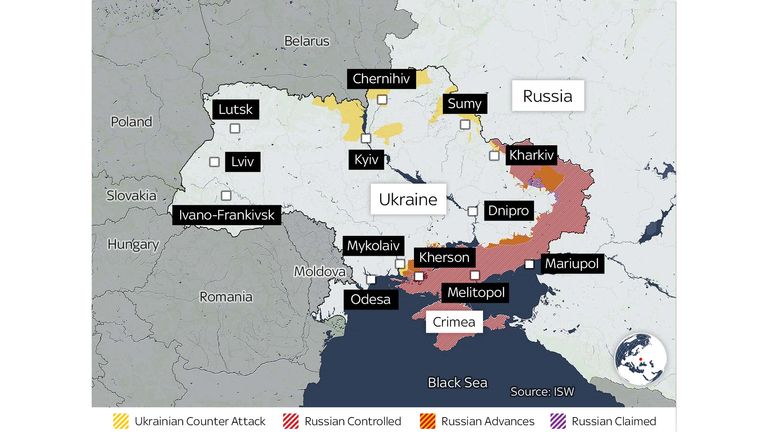[ad_1]
There is a rhythm to life these days in Kharkiv, but it is a ghastly rhythm of sirens and war.
Each day is similar to the last with explosions, billowing smoke, and a fear of what has been hit this time.
We witness a strike on a light industrial area close to the centre of the Ukrainian city. Across the course of one day, we count five attacks.
Each one slowly burns away the fabric of a community, destroying its infrastructure and demoralising the people.
The fire crews of Kharkiv are fighting a brave battle to save their city – currently it is a battle they are losing.
They race to extinguish the source of the acrid black clouds, causing untold damage to lives and livelihoods.
UN ‘ready to mobilise’ to help people out of Mariupol – live updates
In the local hospital, they treat the victims of these attacks in the corridors, partly because they are so busy but mainly because they want to keep them away from the windows in case it is hit.
The patients will not give their names, but some agree to talk to us. One man’s shoulder was shattered when a missile hit a Kharkiv market.
When asked if he had a message for the attackers, he said: “I’m a kind man, but I don’t want the people who did this to me to live.”
Another man, a council worker who has been helping people board up the windows of their wrecked homes and businesses, has been shelled three times.
Twice he escaped without being injured, but he shows us where the shrapnel from his third encounter went straight through a bone in his leg, narrowly missing an artery.
Read more: Those who stayed in Kharkiv live in the shadows
We go back to a Ukrainian Orthodox church, which has so far remained unscathed, to meet Father Victor Marynchak.
We last saw him just before the war, sending off troops to their unknown fate in the freezing February air. He told us he would stay with his people, and he has been true to his word.
Two months into their fight against the invaders, he is comforting and reassuring and encouraging the soldiers here.
There are territorial defence volunteers and heavily-equipped troops making the sign of the cross as he delivers morning mass.
Father Victor estimates two-thirds of his congregation has fled – but he has given them his blessing as long as they return once this war is over. He admits here in Kharkiv “there are no absolutely safe places”.
We ask him about his reaction to what we’ve seen of the attacks on places like Saltivka.
“We bury our warriors, we visit the hospitals, we see the suffering. We see frightened children and the helpless elderly. And it breaks my heart”.
He is a calm man, thoughtful in his answers. But beneath this stillness, and aside from all the prayers, he has nothing but contempt for Vladimir Putin.
When asked what he feels towards the Russian president, he describes him as “Satan in human form”.
Before we leave, Father Victor vows that only being seriously injured or dying would make him leave this church.
Despite all the damage in Kharkiv, there is also defiance that the Ukrainians are not losing this war. They have their spoils, too.
We watch a captured Russian tank from a nearby village be loaded on to a trailer. What’s left of a Russian flag hanging from its turret is ripped off.
Follow the Daily podcast on Apple Podcasts, Google Podcasts, Spotify, Spreaker
Military personnel start spraying black paint over the infamous ‘Z’ logo on the sides of the vehicle.
Erasing the symbols of the enemy is one thing, but ridding the country of the enemy itself is altogether different.
[ad_2]





